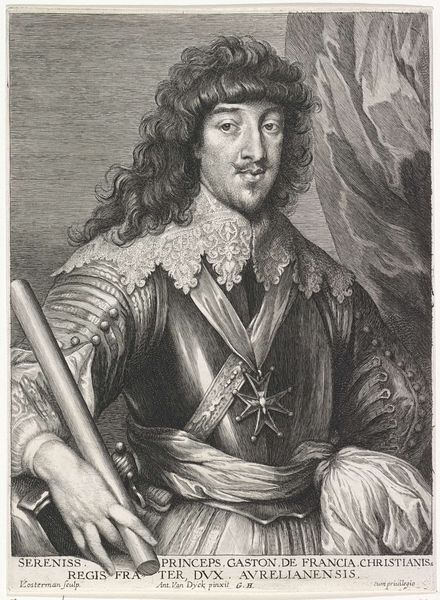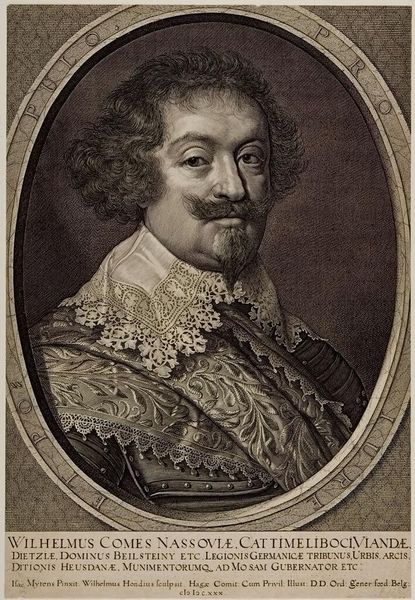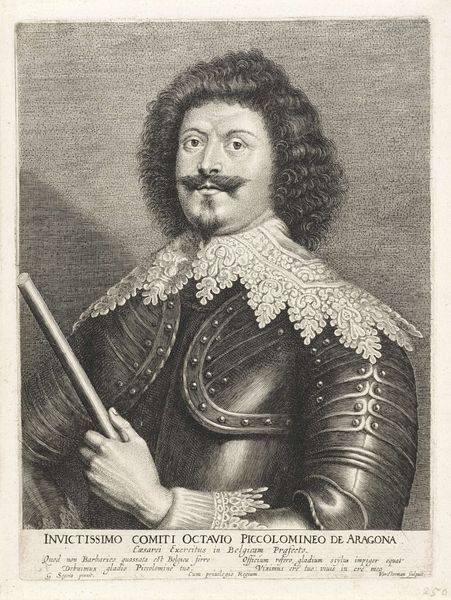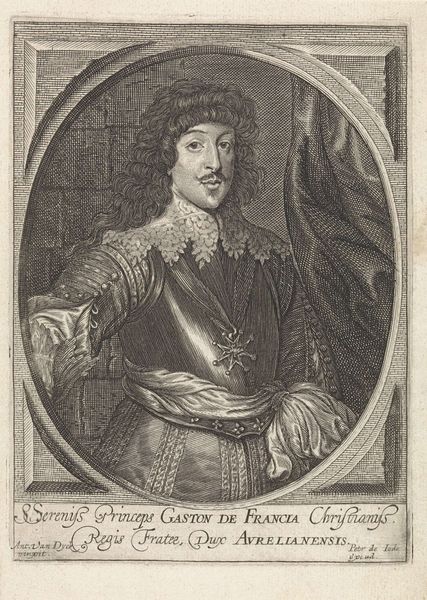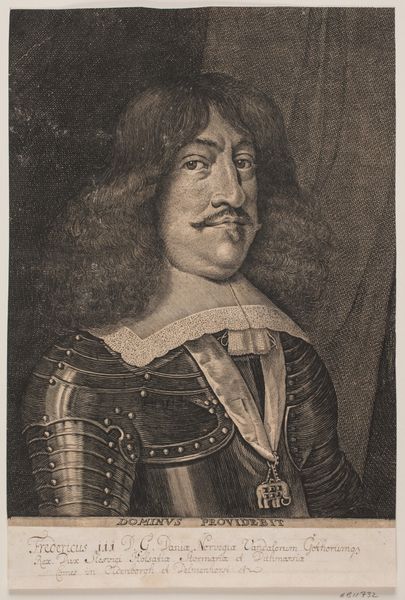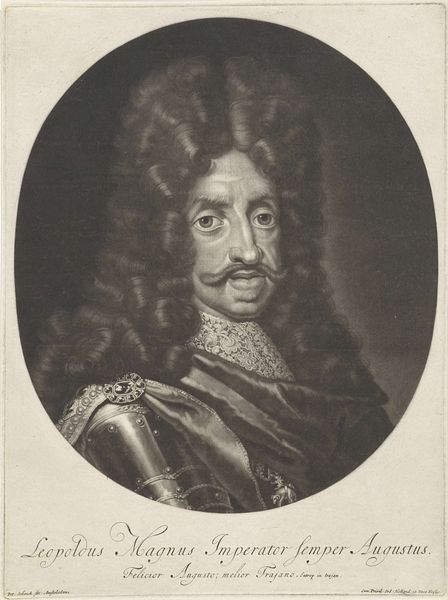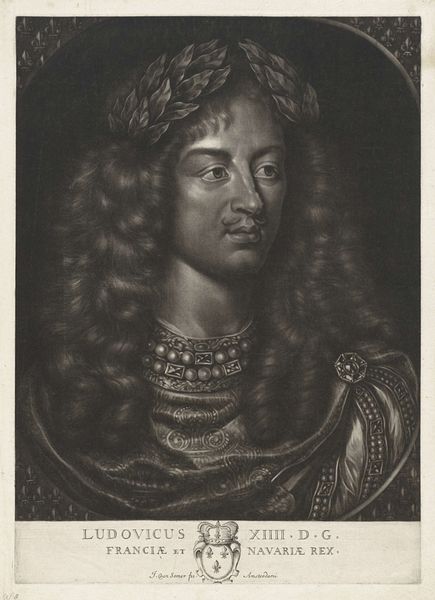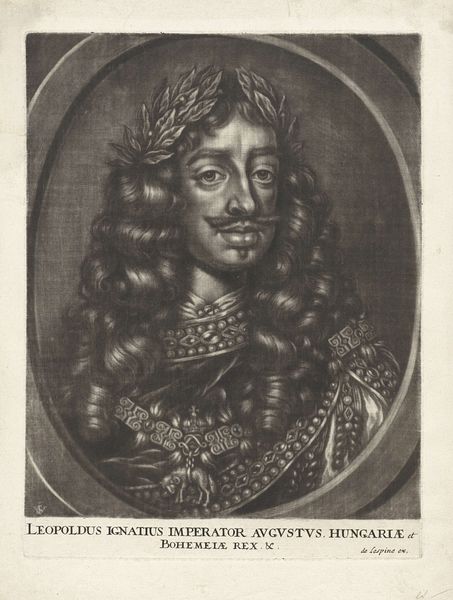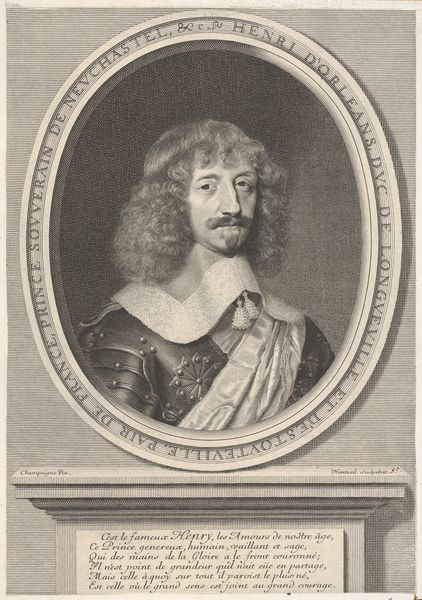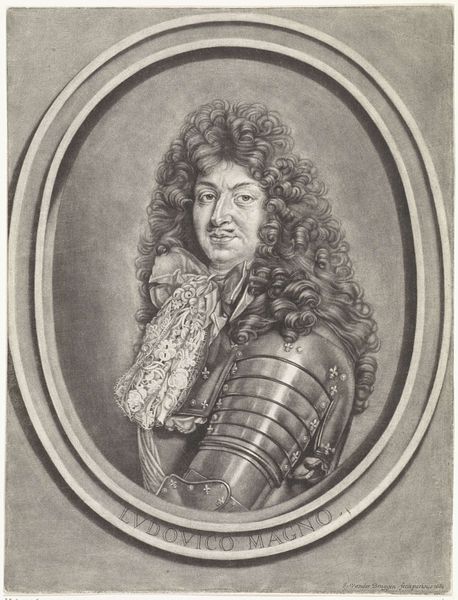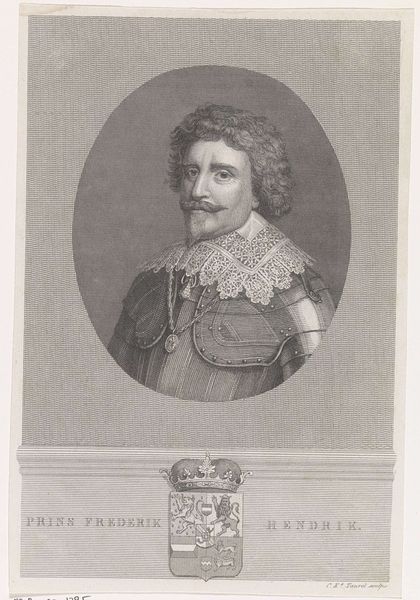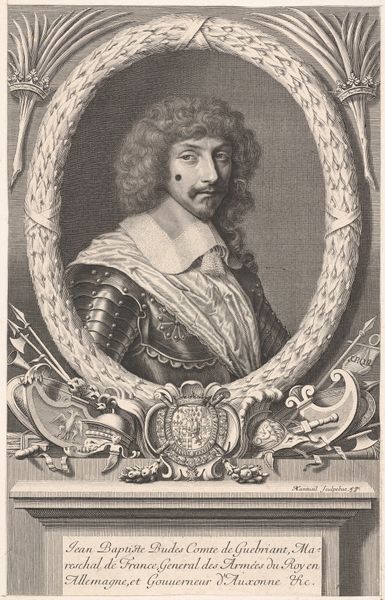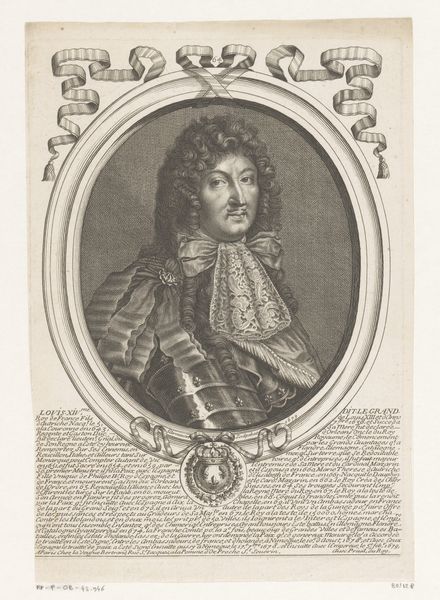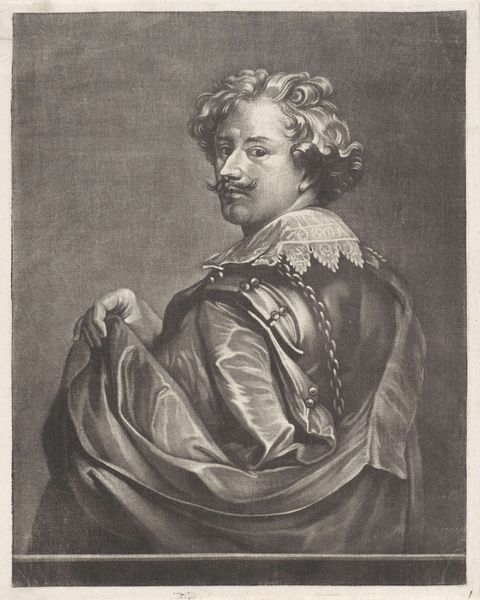
painting, oil-paint
#
portrait
#
baroque
#
painting
#
oil-paint
#
chiaroscuro
#
history-painting
#
academic-art
Copyright: Public domain
Editor: This is Gerard van Honthorst's "Frederick V, King of Bohemia" painted in 1635, and done in oil. The dramatic lighting really draws me in; it feels both powerful and a little melancholy. What catches your eye about this portrait? Curator: The laurel wreath. What does it communicate to you? Think beyond simple victory. Editor: Well, it's meant to signify triumph, right? Like, he’s a champion. But knowing a little about history, I also sense a longing, maybe a claim to something he's lost? Curator: Precisely. The symbols chosen aren't always straightforward, and the laurel wreath is often associated with Apollo and divine authority, but it has acquired layers of cultural meanings through repeated usage over centuries. Honthorst uses this traditional symbol ironically; it's about ambition, legitimacy, perhaps even a tragic awareness of its unfulfilled nature. Look closer – the armor, the regal cape… are these merely decorative? Editor: I see your point. They feel performative. It is less about actual power and more about the idea of power. He *wants* to embody that image. Curator: Exactly. It's the symbolic language of portraiture at its most potent. Think about what these symbols meant to his contemporaries. How might they have understood this image in the context of the Thirty Years' War? Editor: That's fascinating – seeing how layers of meaning build up over time through objects. I will never look at laurel wreaths the same way. Curator: Indeed! It is also the language of longing, aspirations, and sometimes, the heavy weight of history and human drama captured in a single image.
Comments
No comments
Be the first to comment and join the conversation on the ultimate creative platform.
